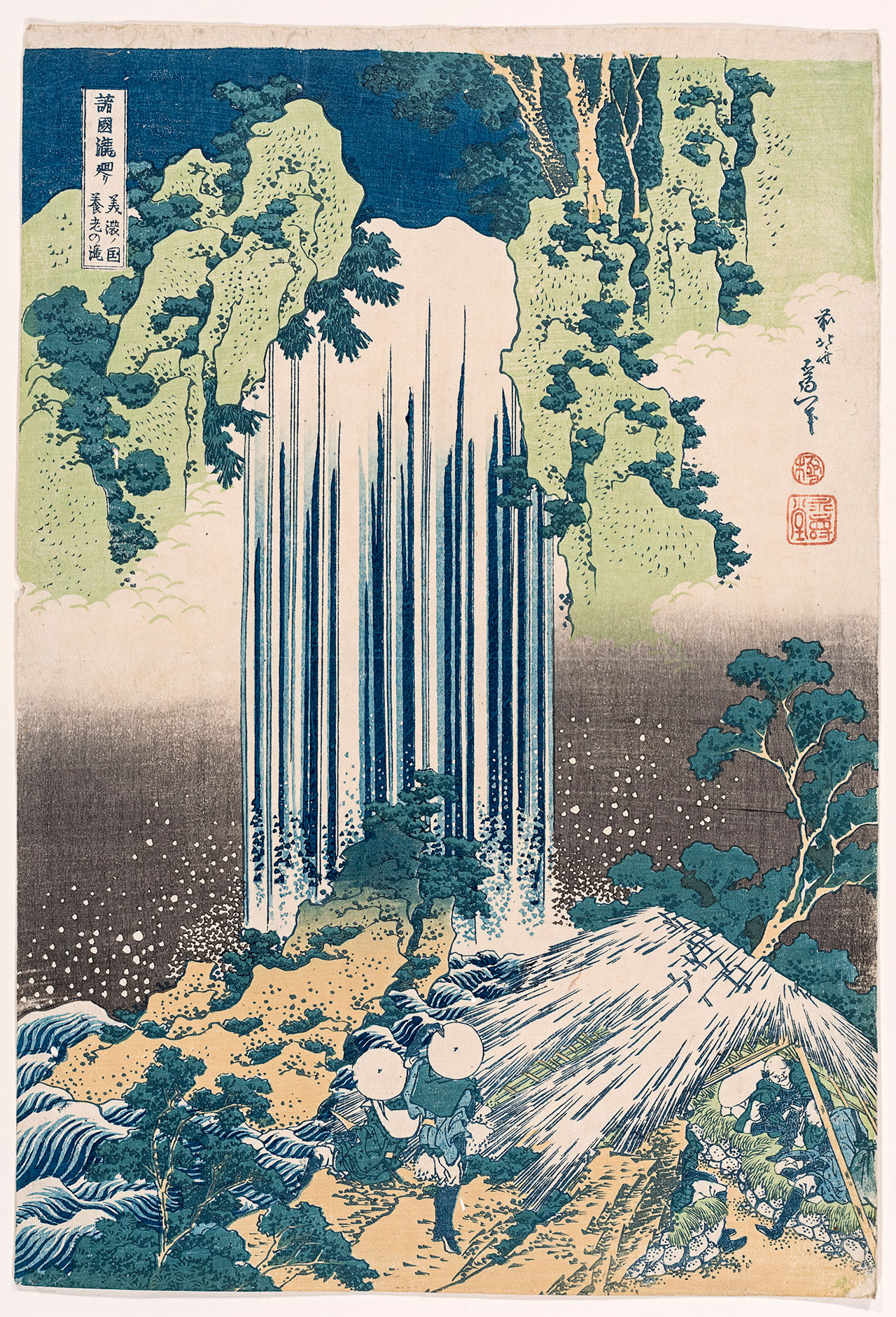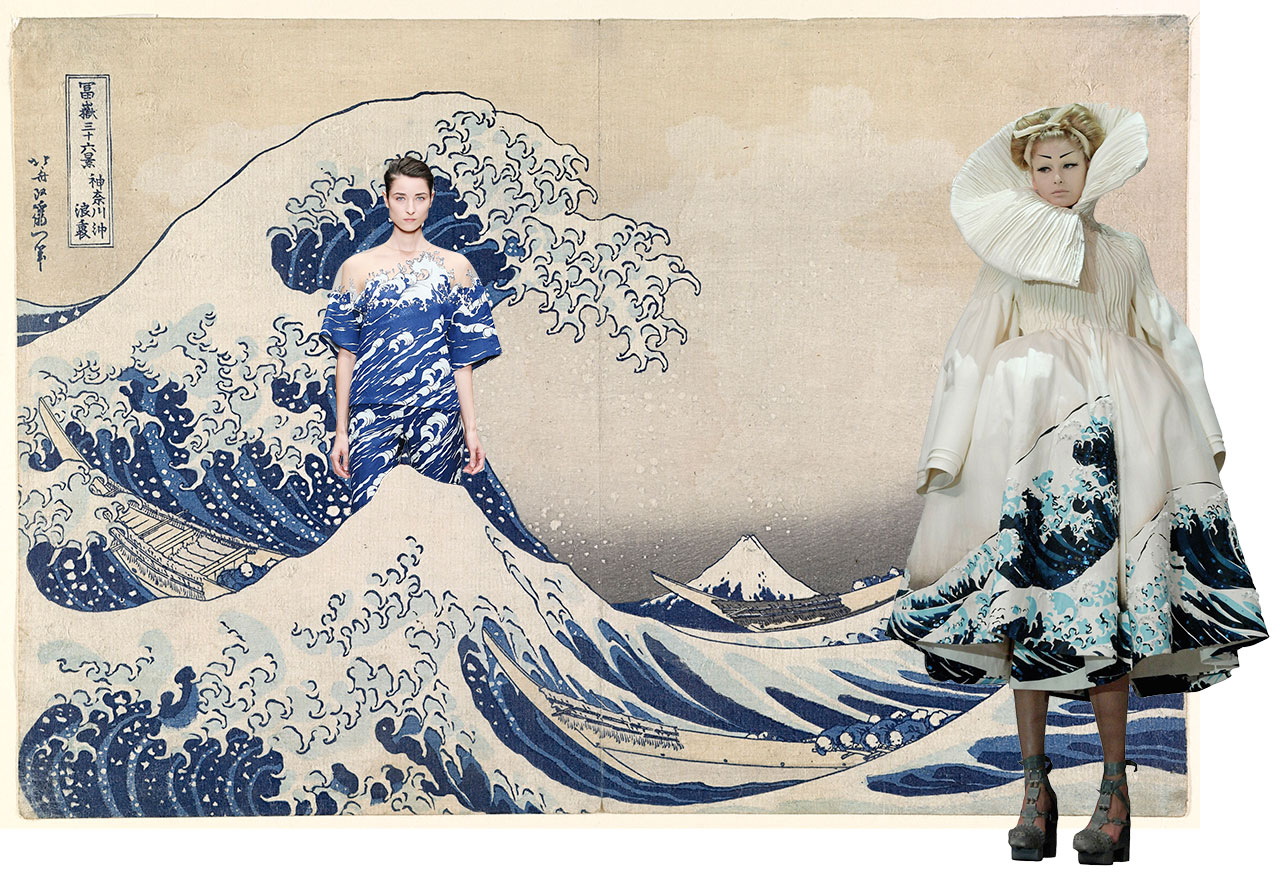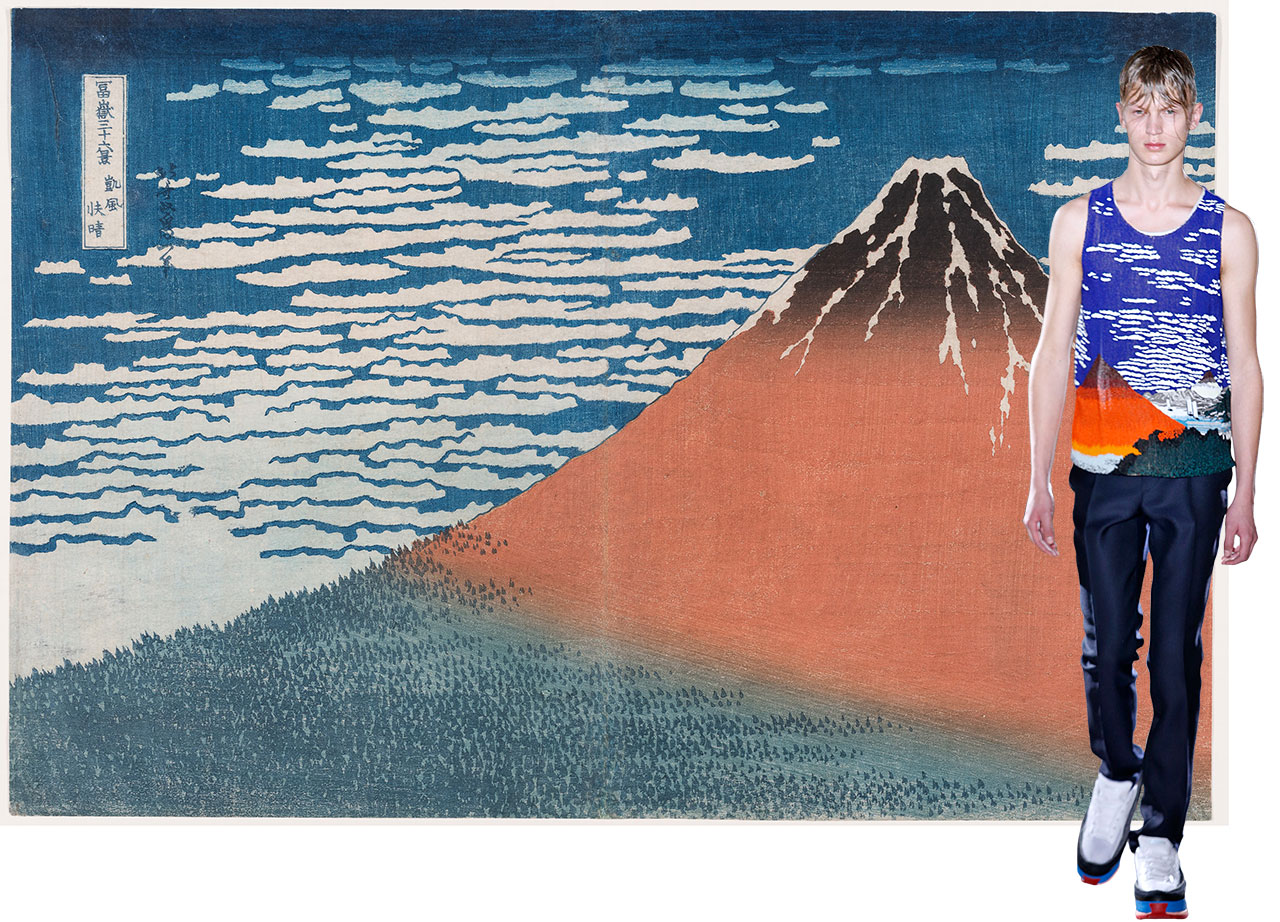News feed

Katsushika Hokusai, The Amida Falls in the far reaches of the Kisokaidō Road (Kiso no oku Amida-ga-taki) (1834–35), from the A tour to the waterfalls in various provinces (Shokoku taki meguri) series, colour woodblock
Credit: The Japan Ukiyo-e Museum, Matsumoto
At the moment that the waves at the J-Bay Open – the men’s World Surf League event held in the shark infested waters of Jeffreys Bay in South Africa – came to a close at the tail end of last week, another began to crest.
In Melbourne, a new exhibition exploring the work of one of Japan’s most influential and prolific artists, the ukiyo-e painter Katsushika Hokusai, opened and brought with it two original prints of one of the world’s most recognisable artworks – one whose influence is felt as keenly across the art world as in those of fashion and popular culture. The first of those woodblock prints of The great wave off Kanagawa was acquired for the National Gallery of Victoria’s permanent collection in 1909. Rarely put on public display due to its fragility and light sensitivity, it is now being exhibited alongside a corresponding early impression of the same great wave on loan from the Japan Ukiyo-e Museum, with whom the NGV collaborated on the entirety of the exhibition, for the duration of Hokusai.
The occasion marks the first time that the two prints have been brought together in the more than 180 years since their creation by the artist, who lived and worked in Edo-period Japan and created many of his rumoured 30,000 works long after he turned 70. The great wave off Kanagawa, or as it’s perhaps best known, The great wave, is undoubtedly the star attraction of Hokusai at the NGV, a career survey of more than 170 works by the artist that spans the breadth of his exhaustive creative output. The exhibition, the largest ever staged in Australia, includes his signature woodblock prints, rare paintings on silk that have never before been exhibited in Australia and hand-printed manga – humerous comic book style illustrations. Hokusai’s five career-defining series – all of which were produced by the artist during his seventies and are supposedly never seen on display in their totality are on display as part of the exhibition, as are all fifteen editions of The Hokusai Manga, which position the artist as a pioneer of the internationally popular narrative art form as it exists today.
And while most will undeniably be familiar with Hokusai’s most famous work, fewer still will know of the transformative impact that his oeuvre would have Japanese art history, particularly in his use of new technologies, experimentation with three dimensional composition and early adopter tendencies when it came to using new colours, like the deep and long-lasting Prussian blue that features so prominently in many of his works (The great wave in particular).

Katsushika Hokusai, The great wave off Kanagawa (Kanagawa oki namiura) (1830–34) from the Thirty-six views of Mt Fuji (Fugaku-sanjū-rokkei) series; at left, Look 27 from Alena Akhmadullina Spring 2016; and right, Dior haute couture 2007 Look 17 by John Galliano
Credit: National Gallery of Victoria, Melbourne, Felton Bequest, 1909; Oleg Nikishin/Epsilon/Getty Images; Chris Moore/Catwalking/Getty Images
Like his famous wave, Hokusai’s influence has proven to be an unerring one, with the artist’s pictorial style evincing itself as an enduring favourite amongst a great deal many fashion designers in particular. In the hands of John Galliano during his 15 year tenure at Dior, the house’s signature bar jacket was reinterpreted for Spring 2007 haute couture as a billowing kimono inlaid with origami pleats, a high neck framing the model’s face above The great wave painstaking embroidered below. For Spring 2011, the then Kenzo designer Antonio Marras rode a similar wavelength during the label’s 40th anniversary show, the collection staged as a tribute to the country that bore both Hokusai and its eponymous designer, Kenzo Takada.
Raf Simons, the eventual successor to Galliano at Dior, would also pay tribute to the country in his Spring 2015 menswear show for his own label, collaging Hokusai prints of Mount Fuji atop sailor collars emblazoned with images redolent of his youth, his family and his Belgian homeland as a means of saying thank you to the Japanese stockists who first took his ready-to-wear collections abroad.
And as recently as last year, the Russian couturier Alena Akhmadullina riffed on The great wave in a number of kinetic and effervescent ready-to-wear looks; more still were embroidered with schools of koi fish, another of Hokusai’s famous subject matters (the incumbent Kenzo designers, Carol Lim and Humberto Leon, achieved a similar effect for their environmentally conscious Spring 2014 ready-to-wear collection).

South wind, clear sky (Red Fuji) (Gaifū Kaisei) from the Thirty-six views of Mt Fuji (Fugaku-sanjū-rokkei) series; and right, Look 38 from Raf Simons Spring 2015 menswear
Credit: The Japan Ukiyo-e Museum, Matsumoto; Victor Virgile/Gamma-Rapho via Getty Images
But even the less runway literate will recognise The great wave in its most minuscule form, and arguably now its most ubiquitous form. Notwithstanding Samsung’s Mona Lisa emoji, it’s the only masterpiece that has been immortalised in emoji form as a pocket-sized testament to Hokusai’s remarkable legacy – one worth exploring in greater depth at the NGV until October 15, 2017. You can find out more information here.
Tile image: Katsushika Hokusai, Japanese 1760–1849, The great wave off Kanagawa/Ibid.
Cover image: Katsushika Hokusai, The suspension bridge on the border of Hida and Etchū Provinces (Hietsu no sakai Tsuribashi) (c. 1834) from the Remarkable views of bridges in various provinces (Shokoku meikyō kiran) series, colour woodblock/Credit: The Japan Ukiyo-e Museum, Matsumoto










